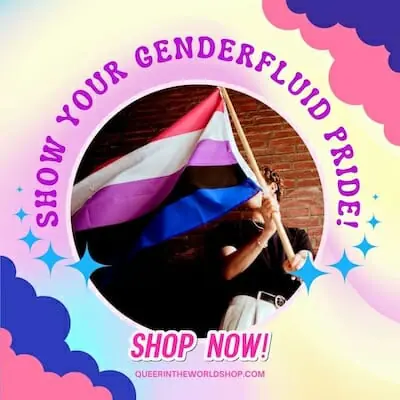More and more terms representing the LGBTQ+ community are coming up. And, it’s always important to understand these new terms so you can refer to an individual by the term they prefer. Even then, with the ‘emergence’ of these new terms, things can get a little confusing.
To get more informed, all we need to do is learn. The good thing is, learning how to differentiate terms that refer to specific communities within the LGBTQ+ umbrella isn’t hard. This article will help by considering the similarities of Agender vs Genderfluid, two separate gender identities.
Let’s learn what they mean, the differences, and the aspects that these two gender identities are associated with.
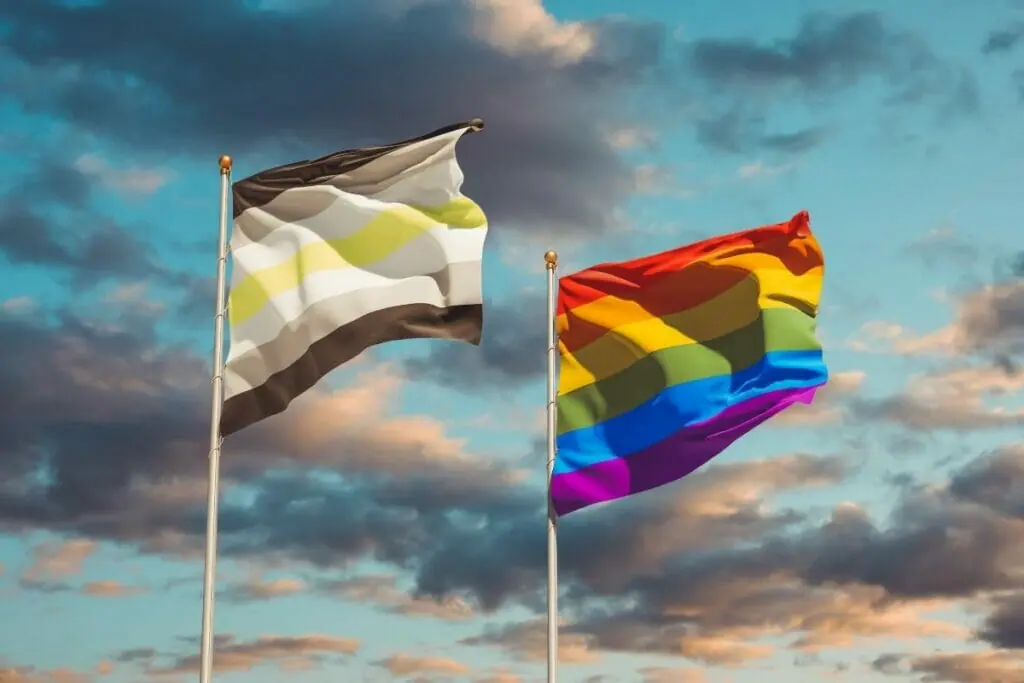
What Is Agender?
Agender is a term that refers to individuals that do not identify as any gender. You could say that agender is not having a gender at all. While there are agender people that describe themselves as gender-neutral, there are those that explain it as ‘a lack of gender’.
Some of the words that could describe being an agender are:
– Gender free
– Neutrois
– Gender blank
– Genderless
Even though the term ‘agenda’ falls under the non-binary and transgender umbrellas, there are those who do not identify as transgender, so it’s always a great idea to ask. Both agender and gender void are similar terms with one common characteristic- they’re both a lack of gender.
However, there’s a slight difference.
An agender person feels like they belong to no gender at all. They don’t ascribe to any gender. On the other hand, gender void people say they feel like there’s a void in place of gender or that they can’t experience gender at all.
In the same way, while the terms agender and nonconforming can overlap, they aren’t the same thing. Gender nonconforming individuals do not conform to any gender norms society expects of them. Some gender-nonconforming individuals may identify as agender, and some don’t.
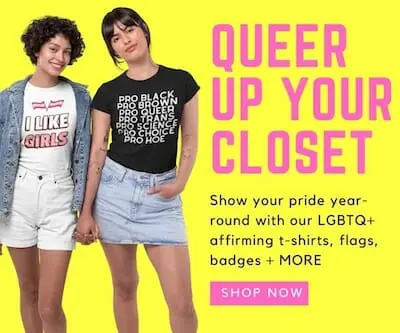
Is Being Agender Limited To A Specific Group Of People?
No, being an agender isn’t for a ‘particular’ group of people. Regardless of the gender assigned to them at birth or their sexual orientation, anyone can identify as an agender. However, just like other terms referring to one’s gender identity, being agender doesn’t mean the same thing to everyone.
Some agender individuals transition medically through gender confirmation treatments like surgery or taking hormones. But some don’t. Whether you choose to use specific pronouns, change your wardrobe, or style yourself differently, how you live as an agender person is totally up to you.

Preferred Pronouns
Pronouns aren’t necessarily determined by an individuals’ gender identity. An agenda individual may use he/him/his pronouns, but they may also use she/her/hers, or they/them/their pronouns. They might even go by a combination of neopronouns and pronouns.
The only way to find out what someone’s preferred pronouns are is to ask. And asking is a simple way to respect individual’s identities… because you can’t judge a book by its cover, and you can’t know someone’s gender simply by their looks!
Agender Vs. Genderfluid: What Makes Agender Different From Genderfluid?
As discussed earlier, genderfluid and agender are terms that fall under the non-binary umbrella. Non-binary refers to any gender that doesn’t fall under the binary. Being genderfluid means that the gender you identify with fluctuates over time. Gender identity is a spectrum after all, and much like sexual preferences, it can shift and change over time.
It’s possible to identify as both agender and genderfluid even if they mean different things. It’s also possible to identify as agender and other gender identities within the non-binary umbrella. Any words an individual uses to describe their gender depends on their beliefs, feelings, and identity. And their identity is never up for debate or for you to debate.
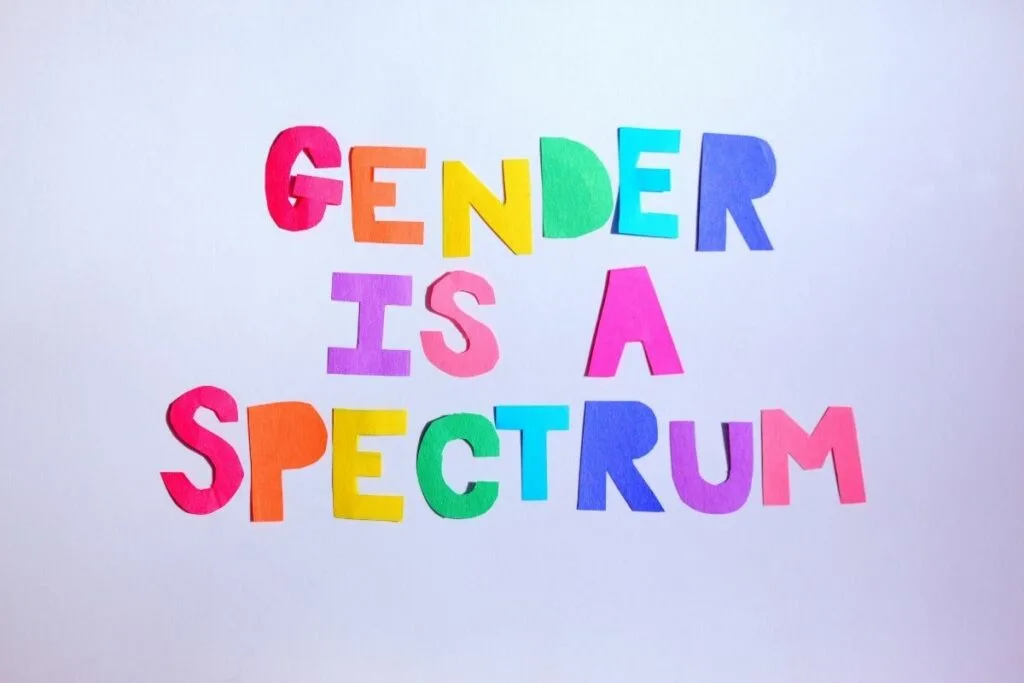
How to Tell You’re Agender
As with all other LGBTQ+identities, there’s no specific test you can get to find out whether you’re an agender. Being an agender depends on your identity. Keep in mind that agender individuals all have varying experiences and whatever word you choose to describe who you are is a personal decision that everyone should respect.
Here’s what you can do if you think you’re an agender:
- Read Articles and Books About Being Agender
You can learn more about being agender by watching YouTube videos, reading books and articles on gender identity, and finding resources about being agender or gender identity. You can learn about your gender by learning and reading about other people’s experiences. This is a common way for many people to learn how to describe how they feel internally and can be a relief to learn that it is not just them that feels this way.
- Consider Your Gender
Take a moment to reflect on what gender means for you. What gender would you identify with if you didn’t have to worry about societal expectations or acceptance? Are there specific pronouns that resonate with you? Take a moment and reflect on what’s important to you and how you’d like to represent yourself. Be honest with yourself and open-minded about what comes to mind.
- Connections Are Important
How about meeting other non-binary / NB members of your community? Find forums where other agender or gender-fluid people in your area meet and find the support you need while questioning your gender. Some dating apps might also help you to find connections, but be careful – even exceptionally queer apps might not always be safe place sadly. You can also try attending pride parades and looking out for others flying an agender flag or genderfluid flag – you can strike up a conversation or you might even get lucky and see they are part of a social group you can look up and join later on!
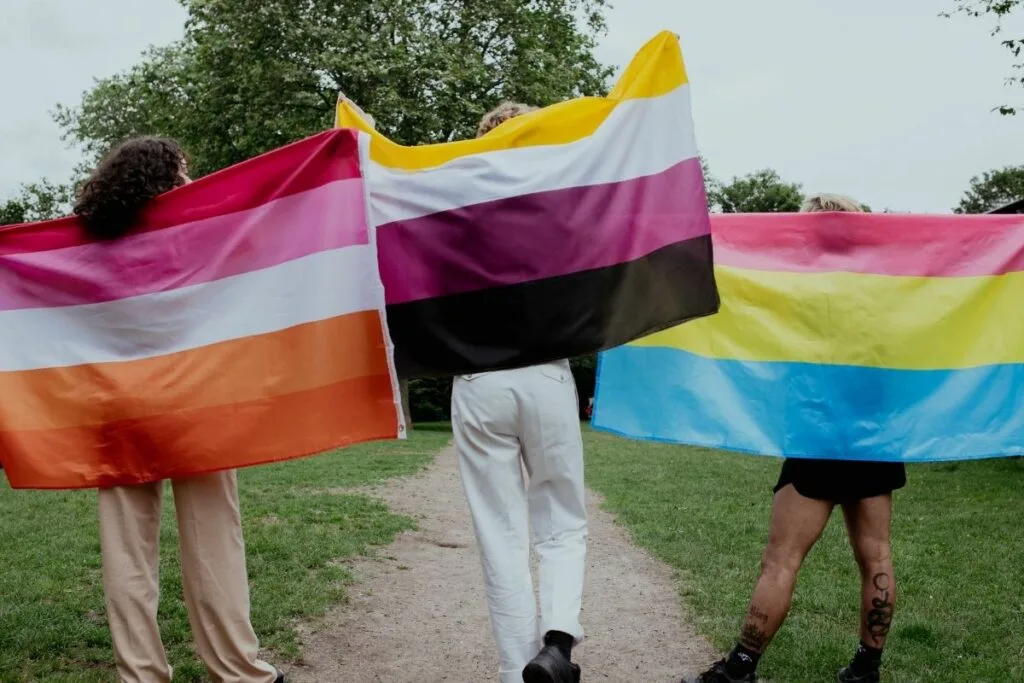
- Practice
Think about how it feels when you practice calling yourself agender. Are you comfortable with it, and is it an apt representation of who you are? You can keep it provide if you’re not ready to share. Just remember that there’s nothing wrong with how you choose to identify yourself. The most important thing is that you’re comfortable with who you are.
Remember gender is a social construct and it is not rigid nor is it permanent as the patriarchy would have you believe. If you later feel that your gender has changed or shifted after identifying as agender, that’s ok. Your gender isn’t invalid just because there’s a chance it might change over time.
What Is Genderfluid?
Take a minute to think about your gender. Do you identify as male, female, or a different gender? If anyone asked- not that it was any of their business anyway- how would you describe your gender identity? How do you show other people your gender through how you act or look or your gender expression? Do you think your gender expression or your gender identity has changed over time?
These questions and others like these are essential if you’re gender-questioning or are genderfluid. Genderfluidity is characterized as a change in a person’s gender identity or gender expression or both over time. Genderfluidity may be a way for some youth to explore their gender identity before they settle on one identity or expression.
For others, genderfluidity might be the only experience they ever have with gender.
Just like agender, genderfluid falls under the non-binary and transgender umbrella. It’s important to note that not everyone who feels changes in their gender identity or gender expression sees themselves as genderfluid. In addition, not all genderfluid people need their bodies to change through gender-affirming treatments to align more with their identity.
Fluid refers to how an individual internally identify themselves and presents themselves to everyone else. A gender-fluid individual may identify themselves as neither male nor female, as female one day, male the next, or both on a different day.
Again: gender is a social construct, and it is entirely up to you to express yours however you want (if you chose to at all).

Other Names For Genderfluid
Genderfluid individuals don’t fit into societal expectations and norms that group people into a binary (either feminine or masculine).
Sometimes, genderfluid individuals can identify as genderqueer. We cover the differences of genderfluid vs. genderqueer in more detail here.
While there are differences, agender, bigender, and demi gender individuals can identify as genderfluid. They might have a preference for neutral terms such as ‘they/them/their’, use ‘her/she/hers’ and ‘his/him/he’ pronouns.
Most times, people confuse being genderfluid with gender-neutral. But, there’s a difference. Genderfluid means someone’s gender identity is adaptable. They can be one, multiple, or no gender. On the other hand, gender-neutral means that one’s gender identity or sexual orientation isn’t defined.
While people might think that being genderfluid is a phase, it isn’t.
The main characteristic of being genderfluid is that one’s gender identity can change. When it does, this doesn’t mean that the person isn’t genderfluid anymore. Unless they specifically say that they aren’t, they still are.
Medical experts say that when children are around 2-3 years old, they start to acknowledge gender-stereotyped behaviors (Martin CL, Ruble DN. Patterns of gender development. Annu Rev Psychol. 2010). While children can notice behavioral norms by the time they’re in preschool, they may still engage in cross-gender play and preferences as part of their day-to-day exploration exercises.
This might not necessarily have an effect on their gender identity in the future. But, if a child still identifies as gender diverse as they grow, they’re most likely not going through a phase. If more parents and educators would understand this and support these children on their gender journey the world would be a far better place for everyone.

Is Genderfluid And Transgender The Same?
Genderfluid is considered a term under the transgender umbrella. But, there are genderfluid people that don’t identify as transgender. Some people are aware of/develop a gender identity while they’re still children. Others will identify with different genders at different points in their life.
For instance, someone who was designated male at birth may identify as a boy until they hit adolescence. They may, later on, identify as a girl later on. This person may be considered as a transgender individual and not necessarily genderfluid. Someone else who follows the same path may identify as a girl past their adolescent stage, then identify as non-binary, then as a girl well into adulthood.
Such a person is considered gender-fluid since they have experienced multiple changes in their gender expression and identity. However, please note that this person may not label themselves as gender-fluid if that’s not how they feel.
In the end, anyone who identifies and feels genderfluid is genderfluid. Remember that genderfluidity may mean different things for individuals.

Genderfluidity In Children And Teens
Like adults in the LGBTQ+ community, children and teens who experience different gender identities outside of the binary may experience discrimination and prejudice. Such experiences may result in stress that may affect their physical and mental health.
Unlike cisgender youth, LGBTQ+ youth are two to three times more prone to self-harming behaviors, depression, and anxiety. They are also more likely to experience suicidal behaviors and thoughts.
Society has put expectations on what should be considered ‘normal. A gender-fluid youth may experience more discrimination and prejudice because of their shifting gender expression and identity that goes against the expectation that each aspect of their changing identity develops early in life and should stay the same.
A gender-fluid youth may face discrimination not only from the outside world but also from the transgender community since they aren’t seen as being ‘truly’ transgender. Anyone with rigid ideas about gender is likely to feel threatened or confused by a youth that expresses their masculinity one day and their femininity another day.
Support For Genderfluid Youth
Genderfluidity should be viewed as one diverse part of the human experience related to gender expression and identity. Treating fellow human beings requires acceptance, and it’s just as essential for teens and children.
Here are some great tips for how to show your support to gender-fluid individuals in your life:
– Allow youth to validate their experiences of their gender identities. No one knows another person’s gender as much as the person experiencing it does.
– Always be patient with someone figuring out their genderfluidity. Keep in mind that it may play a role in the development of their gender identity.
– If one of the people you know would like to get gender-affirming surgery or therapy or care, support them enough that they can make informed decisions.
– Connect youth and individuals to resources so they can access support from other people with similar experiences.
Whether you’re agender or genderfluid, your gender identity and how you choose to or not to label it is your decision. If you feel more comfortable calling yourself agender, go for it! If you’re genderfluid, it’s up to you how you choose to represent yourself.
Whether your label stays the same your entire life or changes an hour, day, or week from now doesn’t matter. The only thing that does is that the label you choose for your gender identity is apt, feels comfortable, and makes you feel good.
When it come to Agender Vs. Genderfluid, the thing to remember is that gender is a personal thing. You identify with what you feel is right for you. The best way to determine your gender is to self-identify. This means that only you and no one else has a say on your identity or whether you’re a woman, man, or something other than that.


